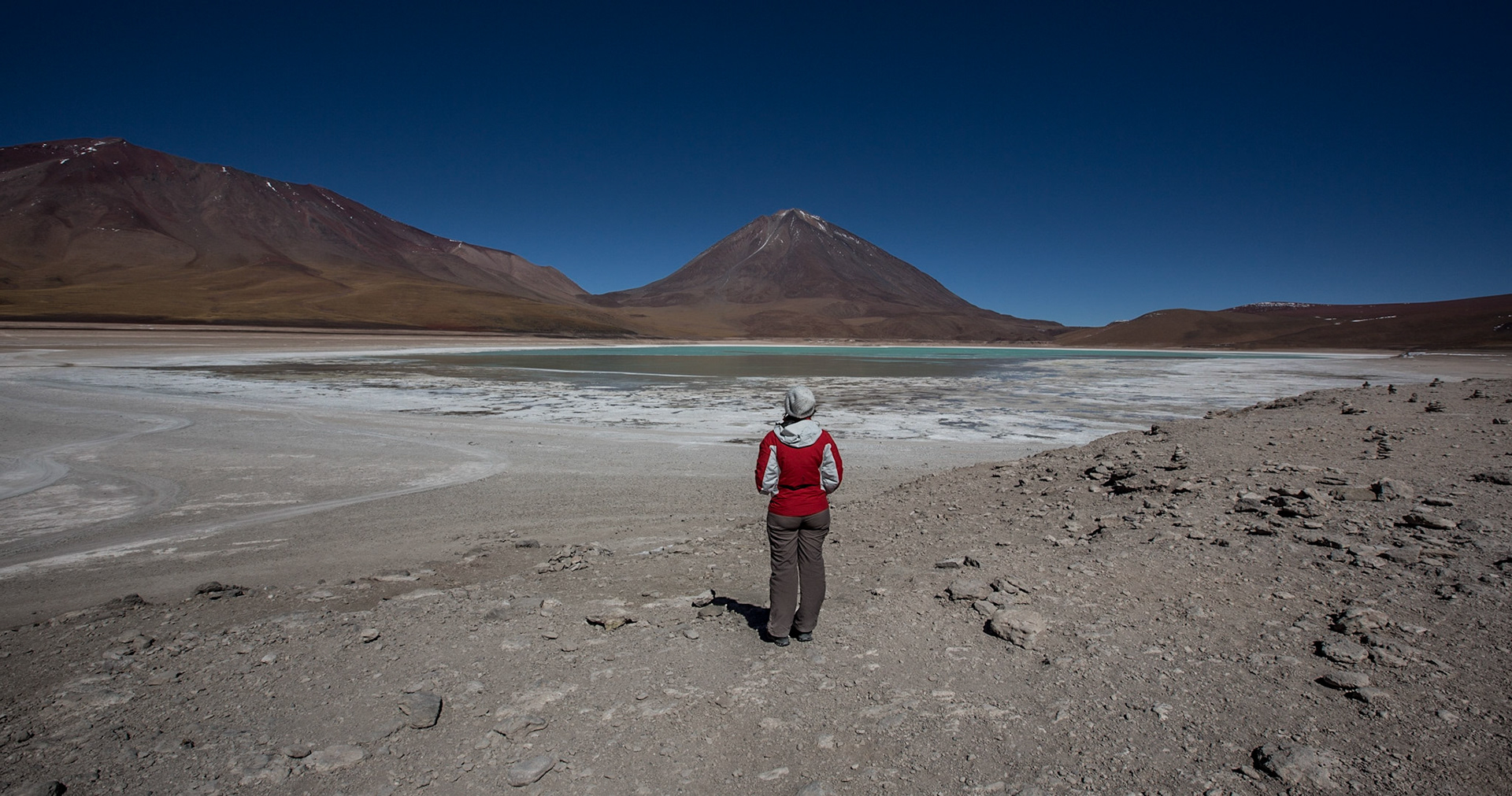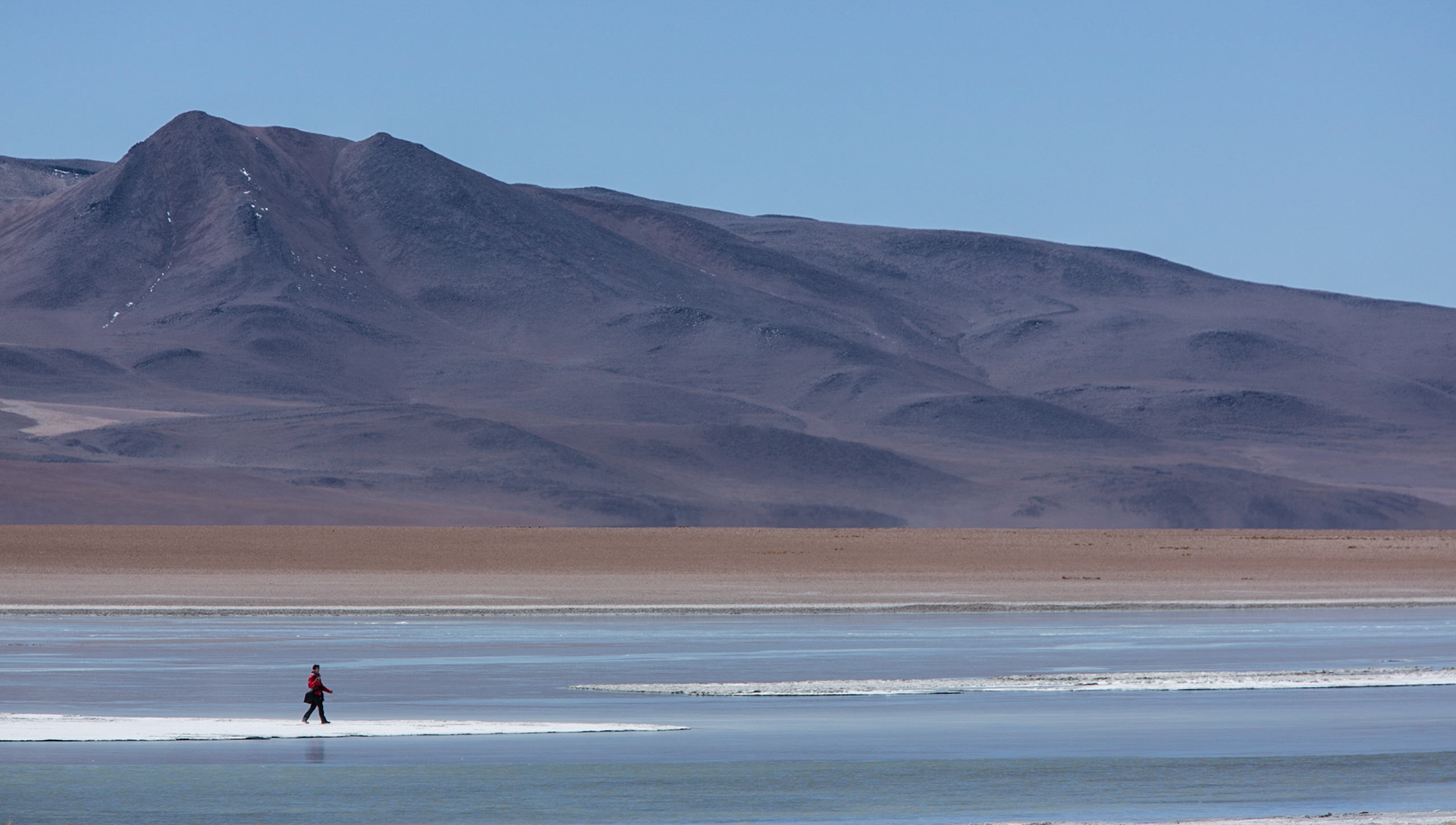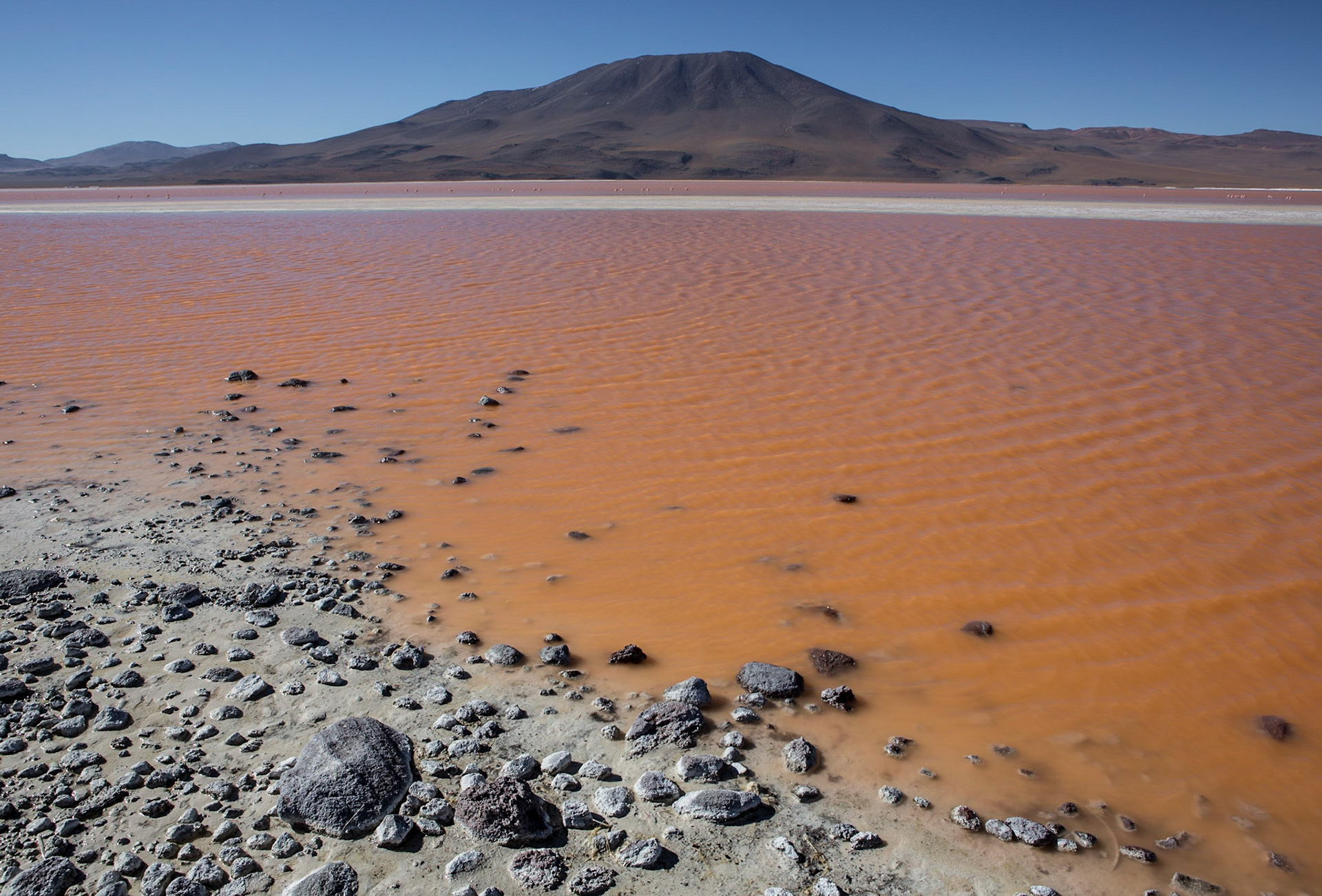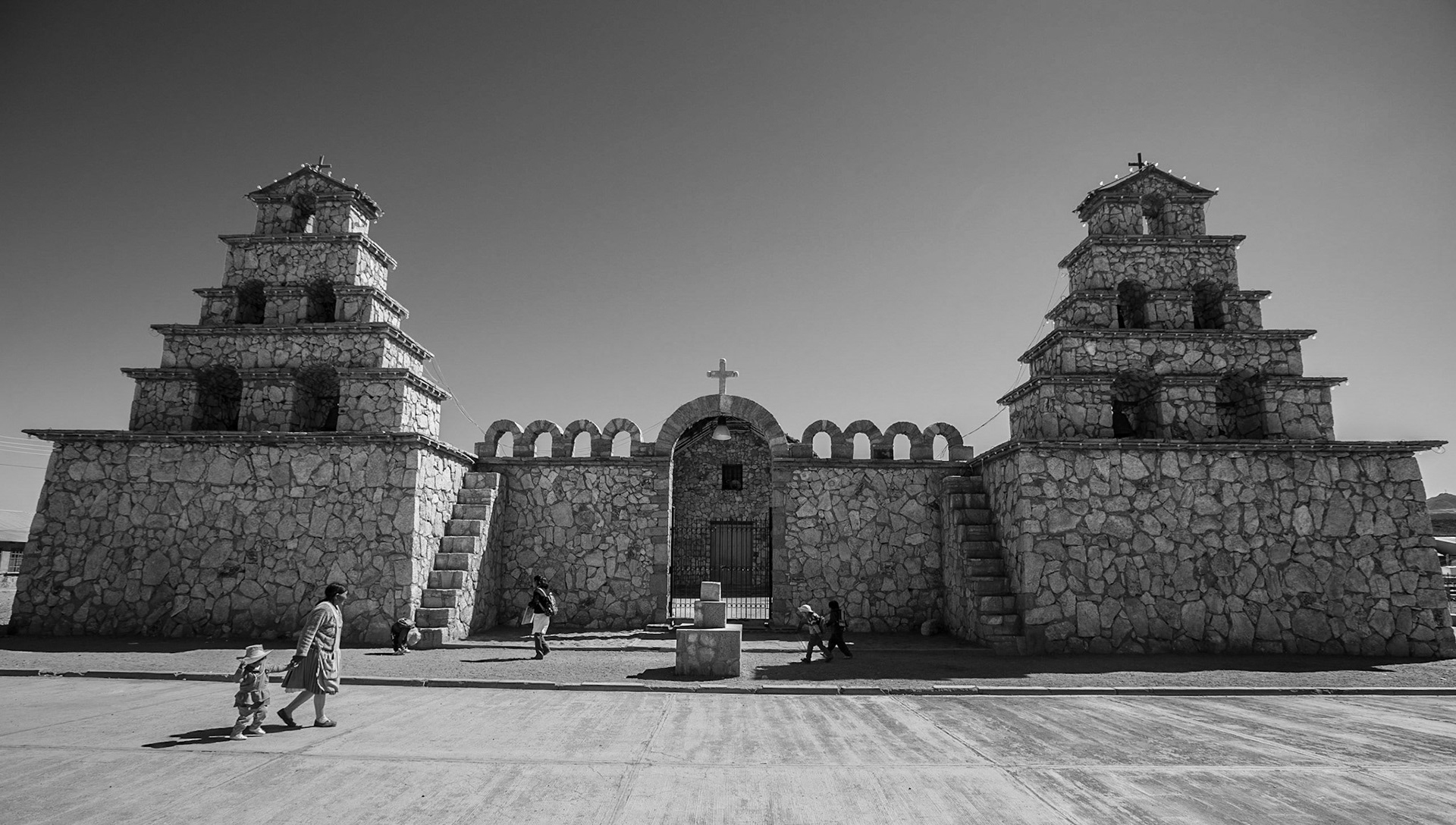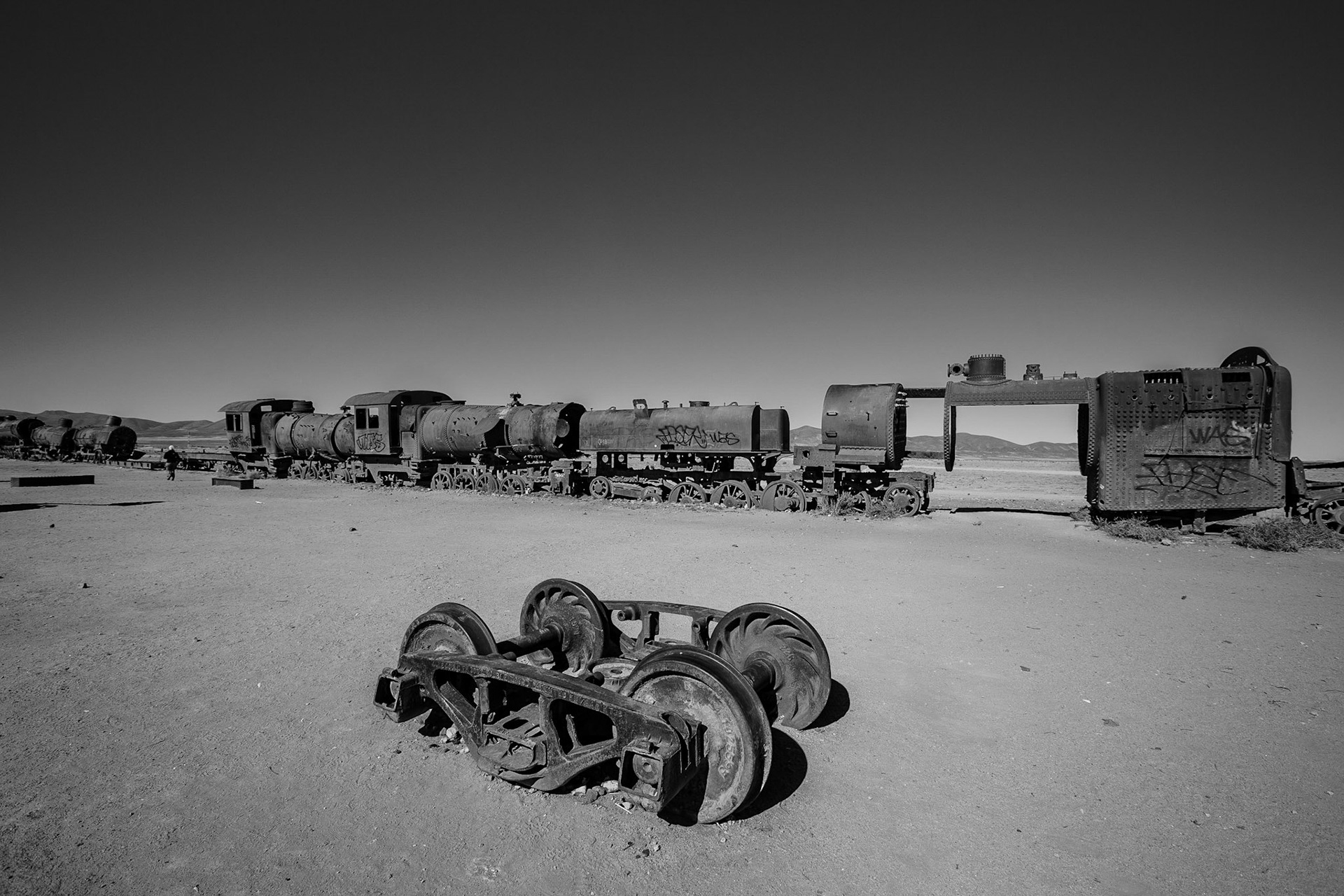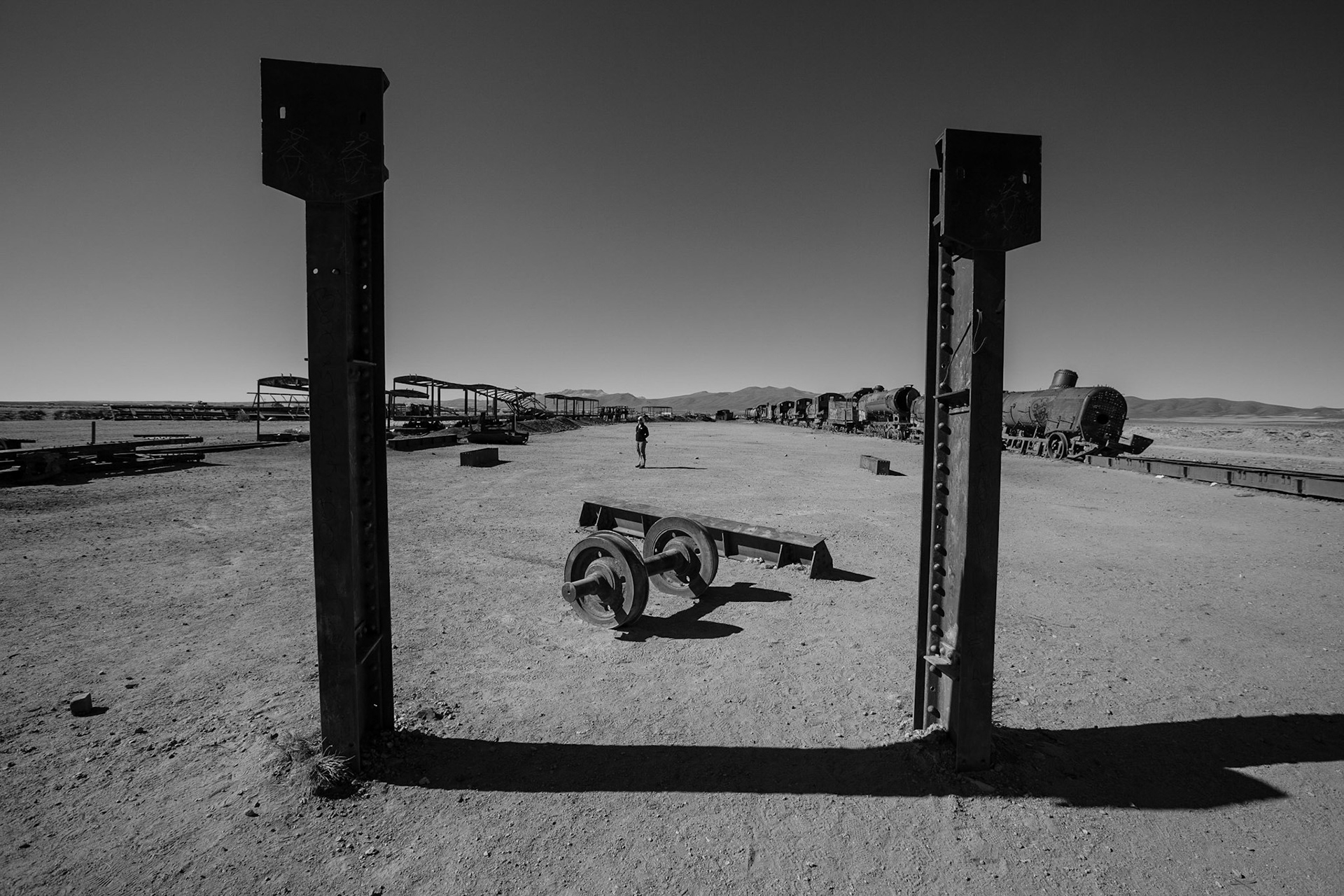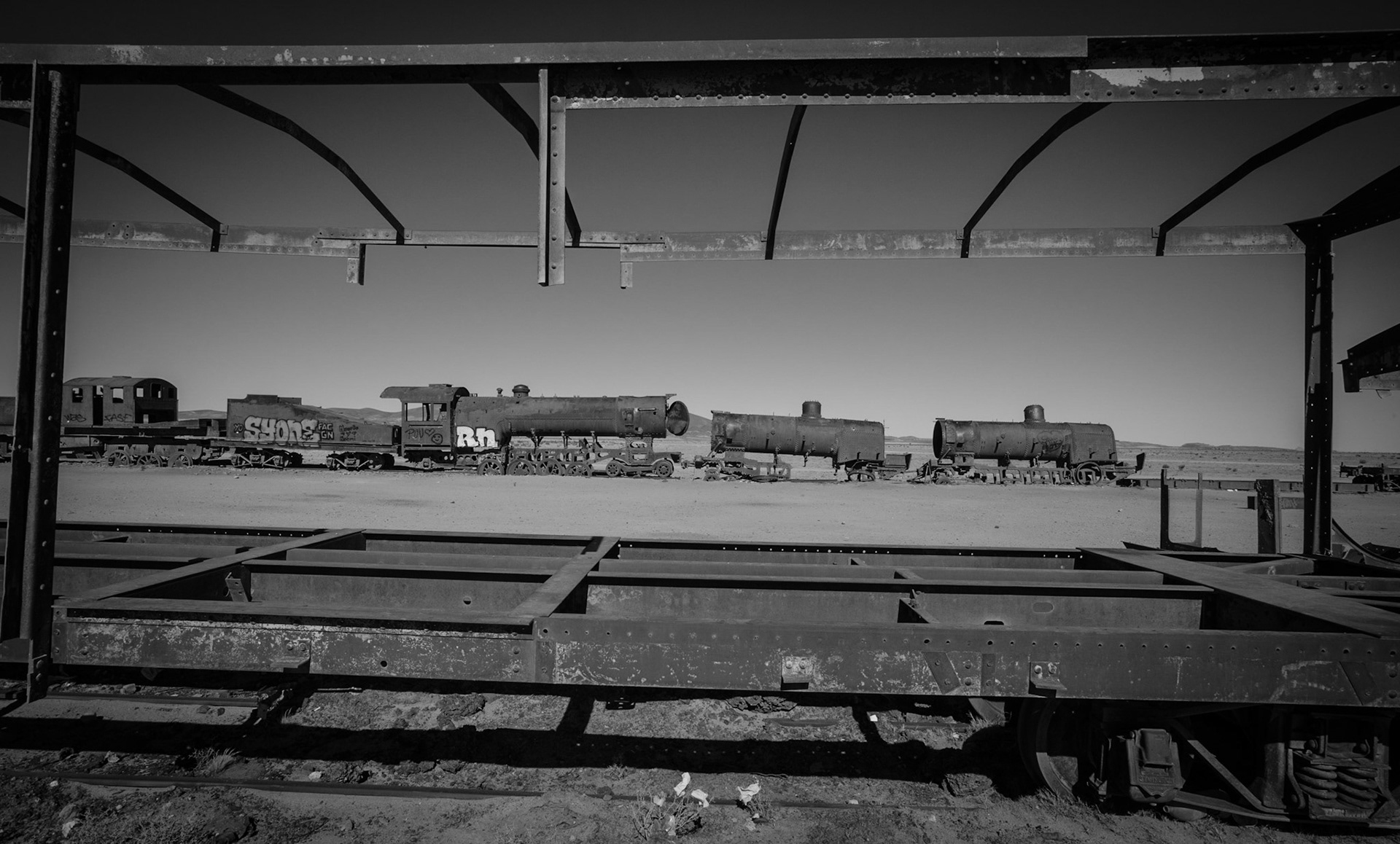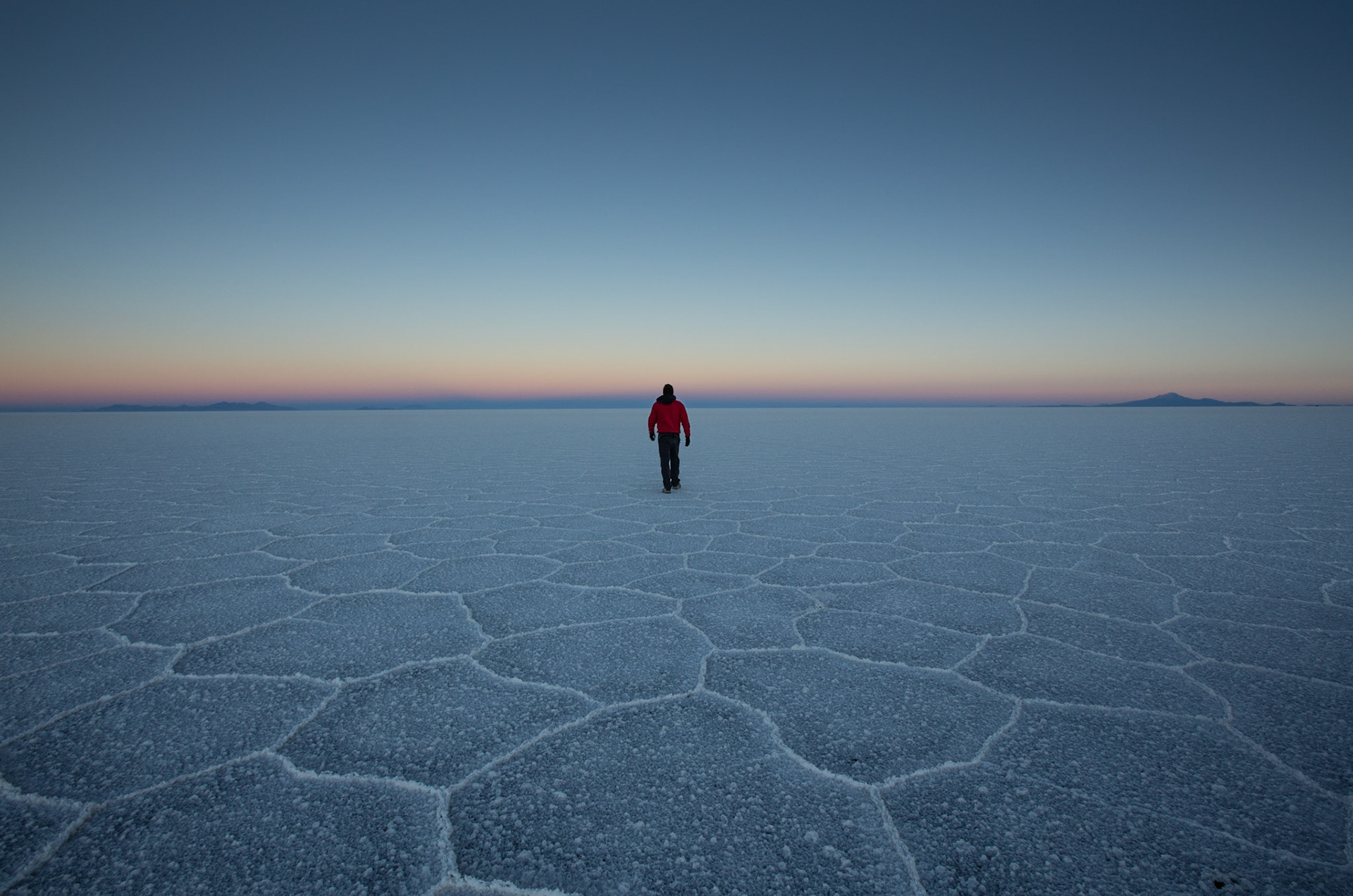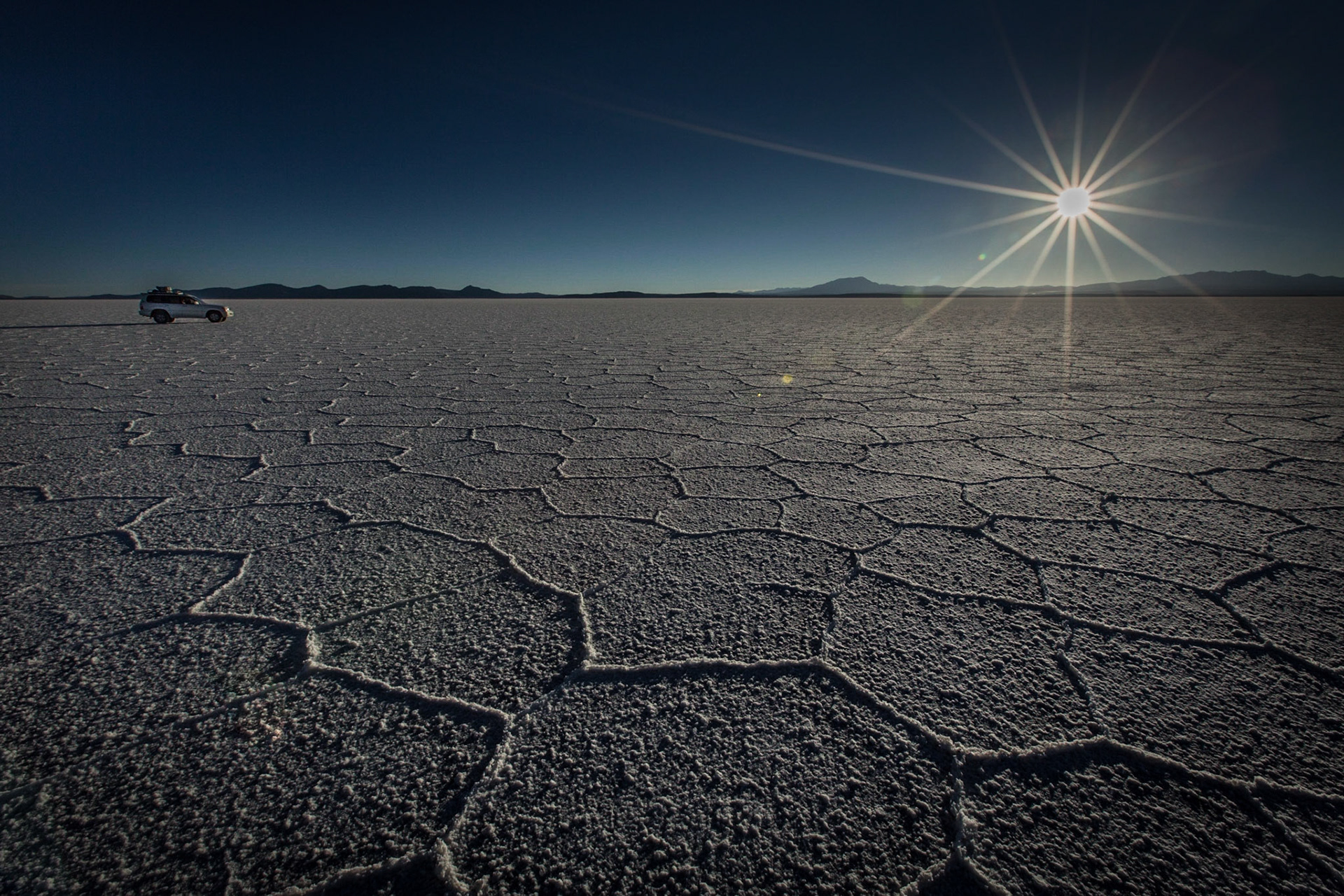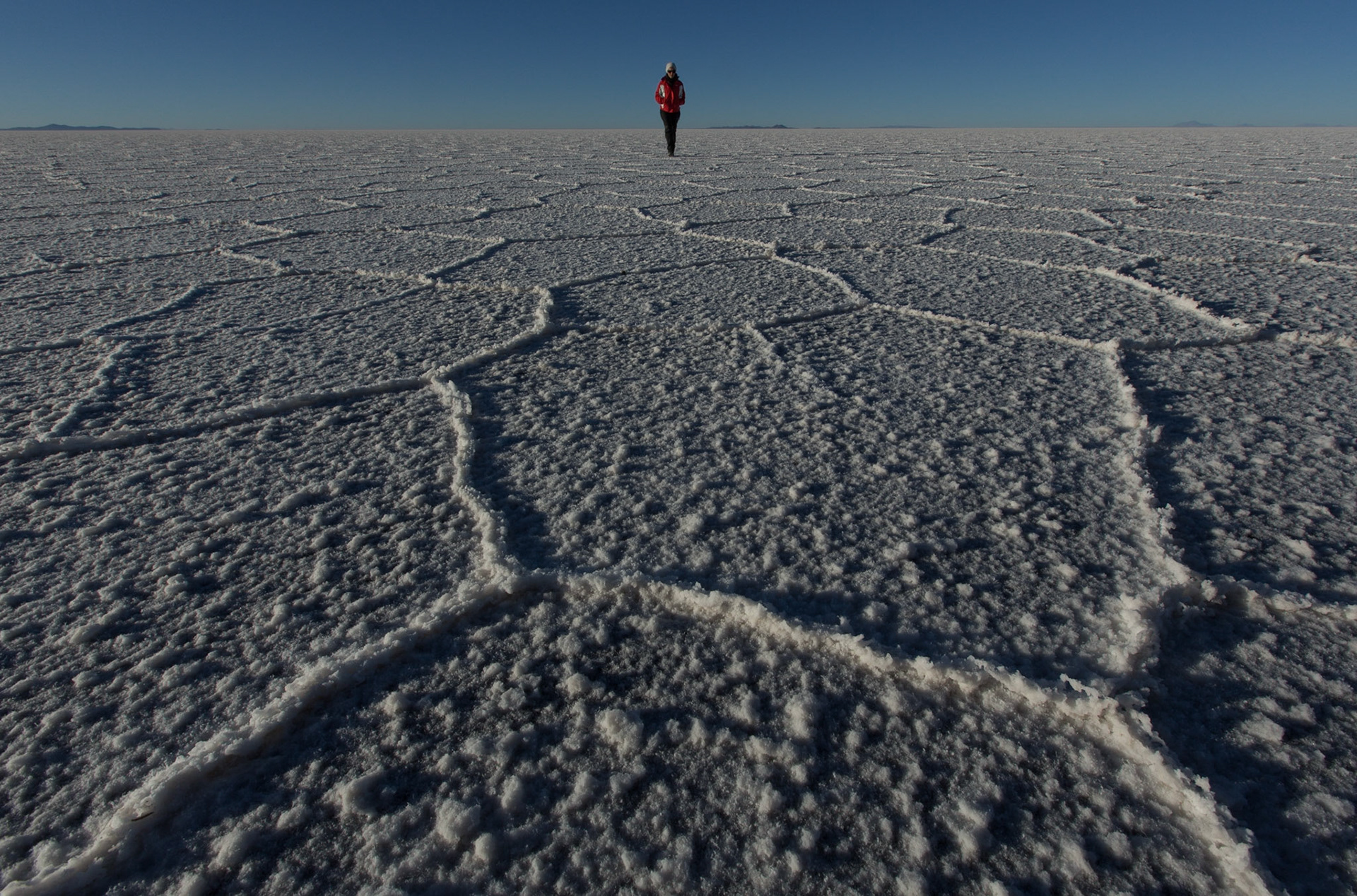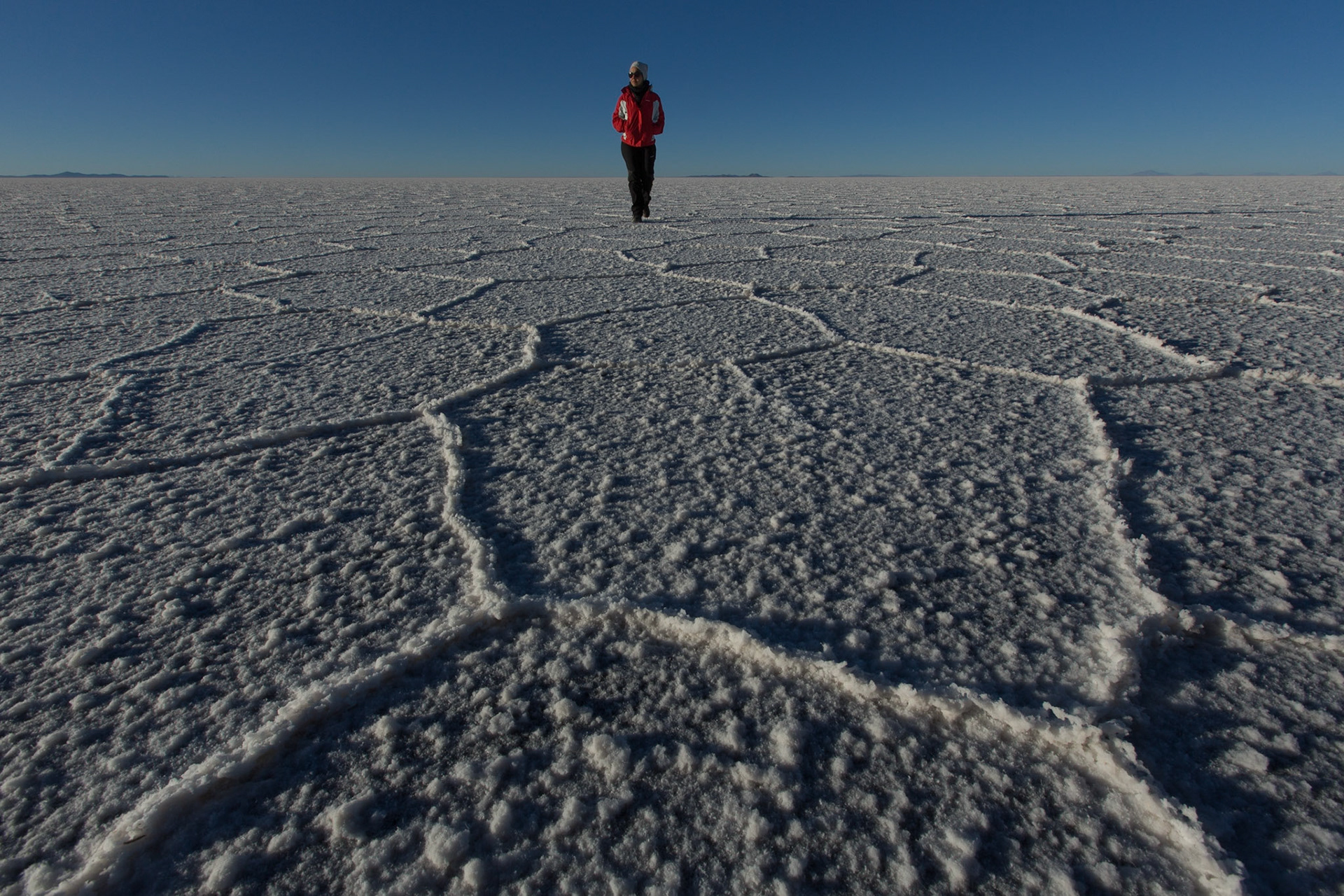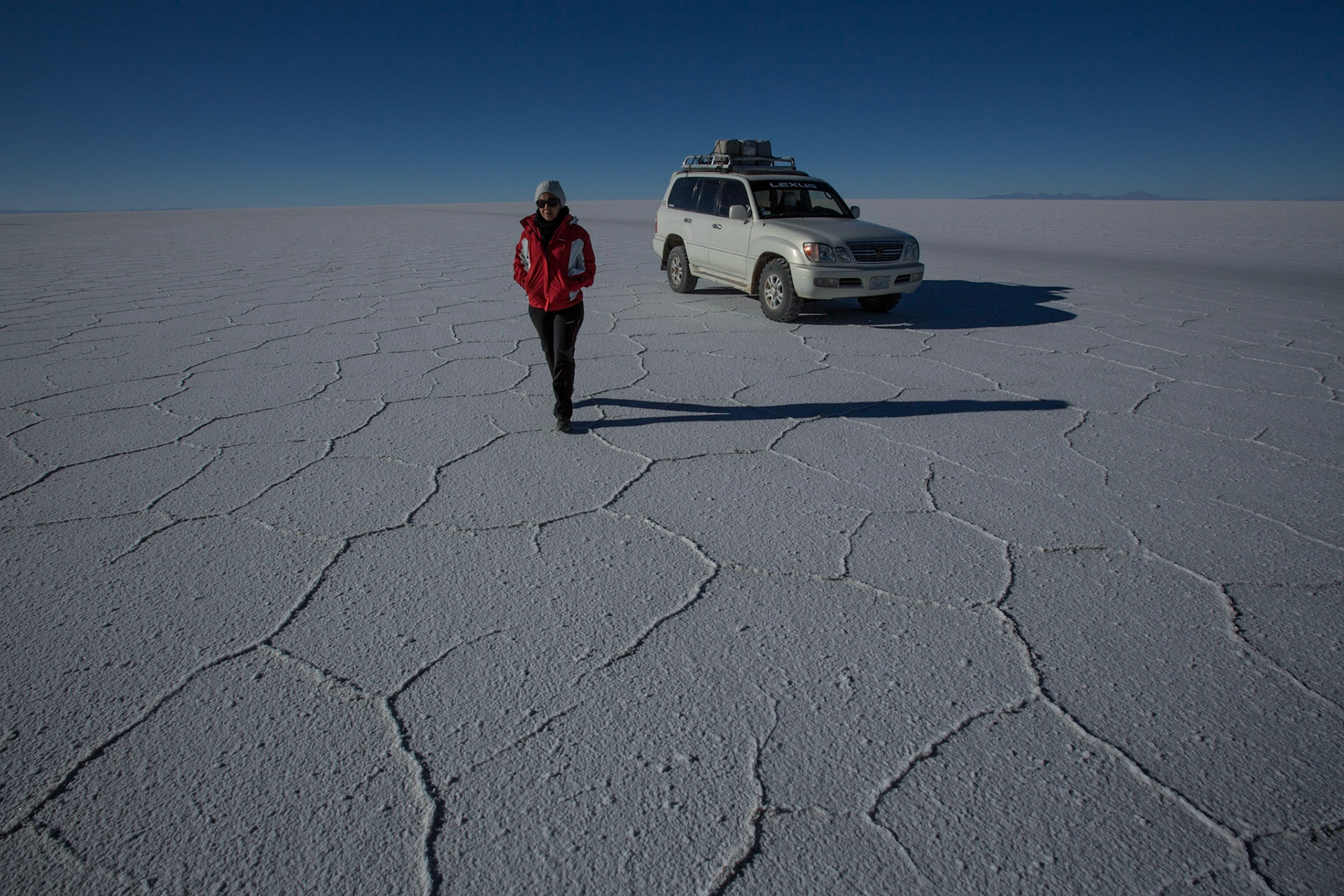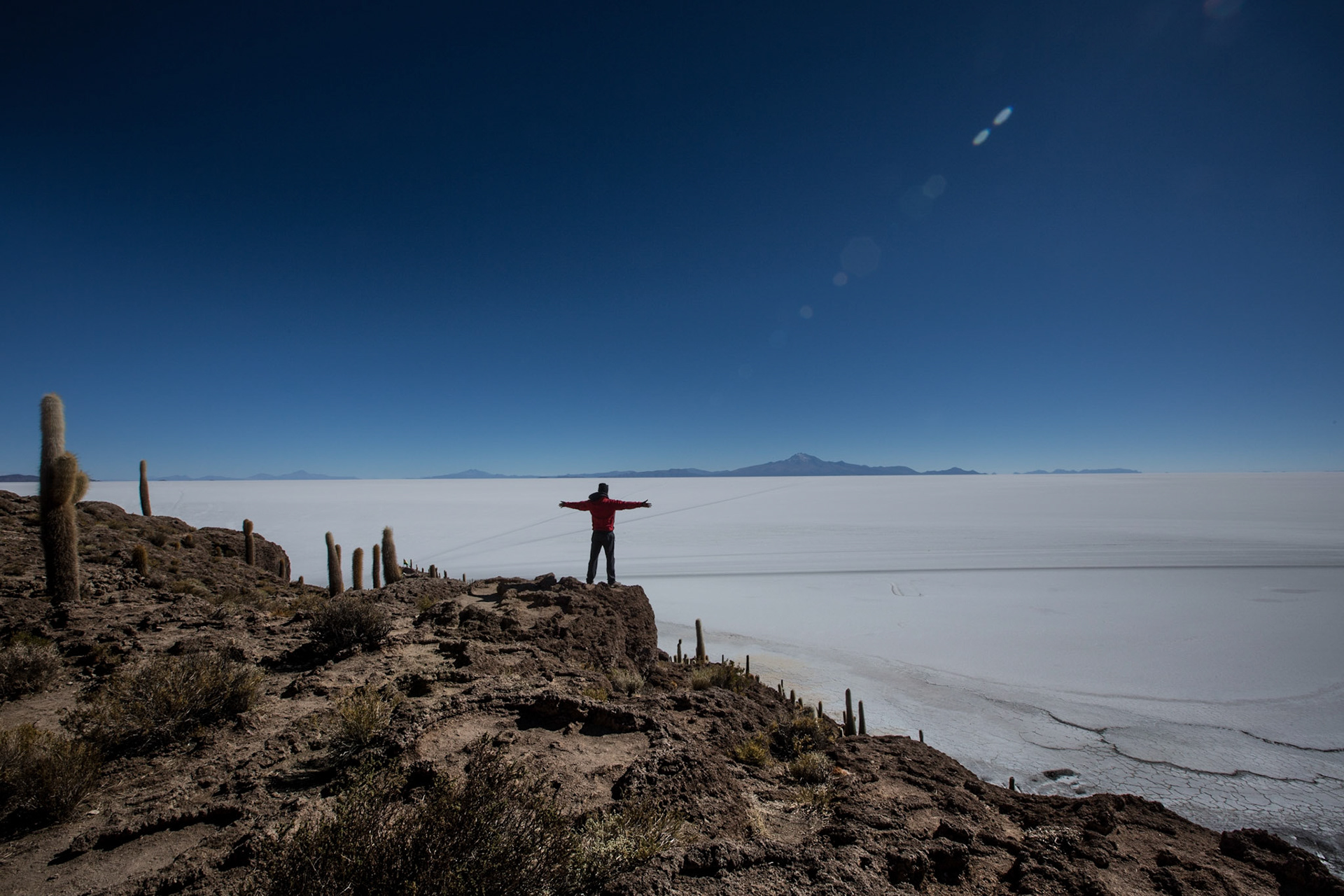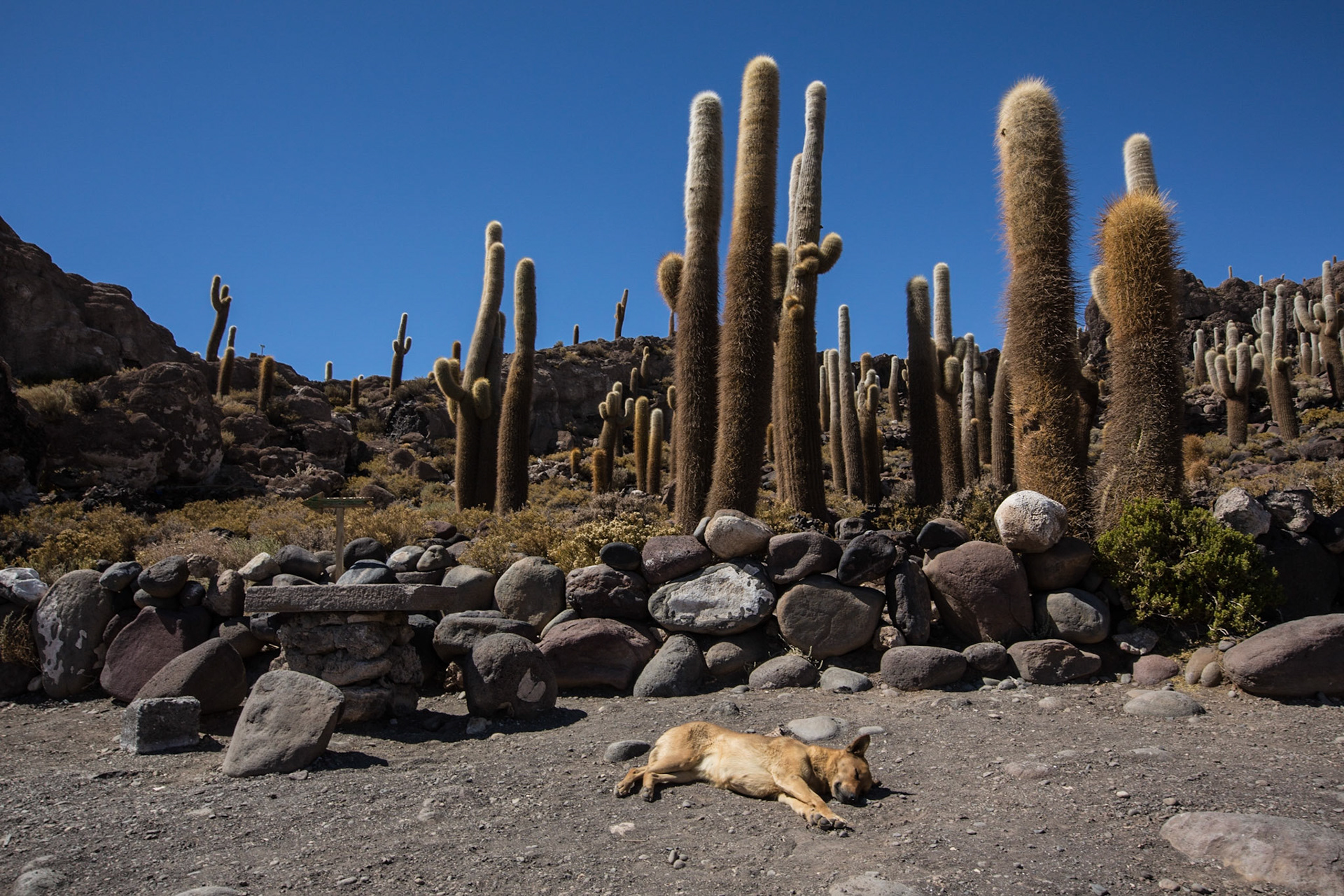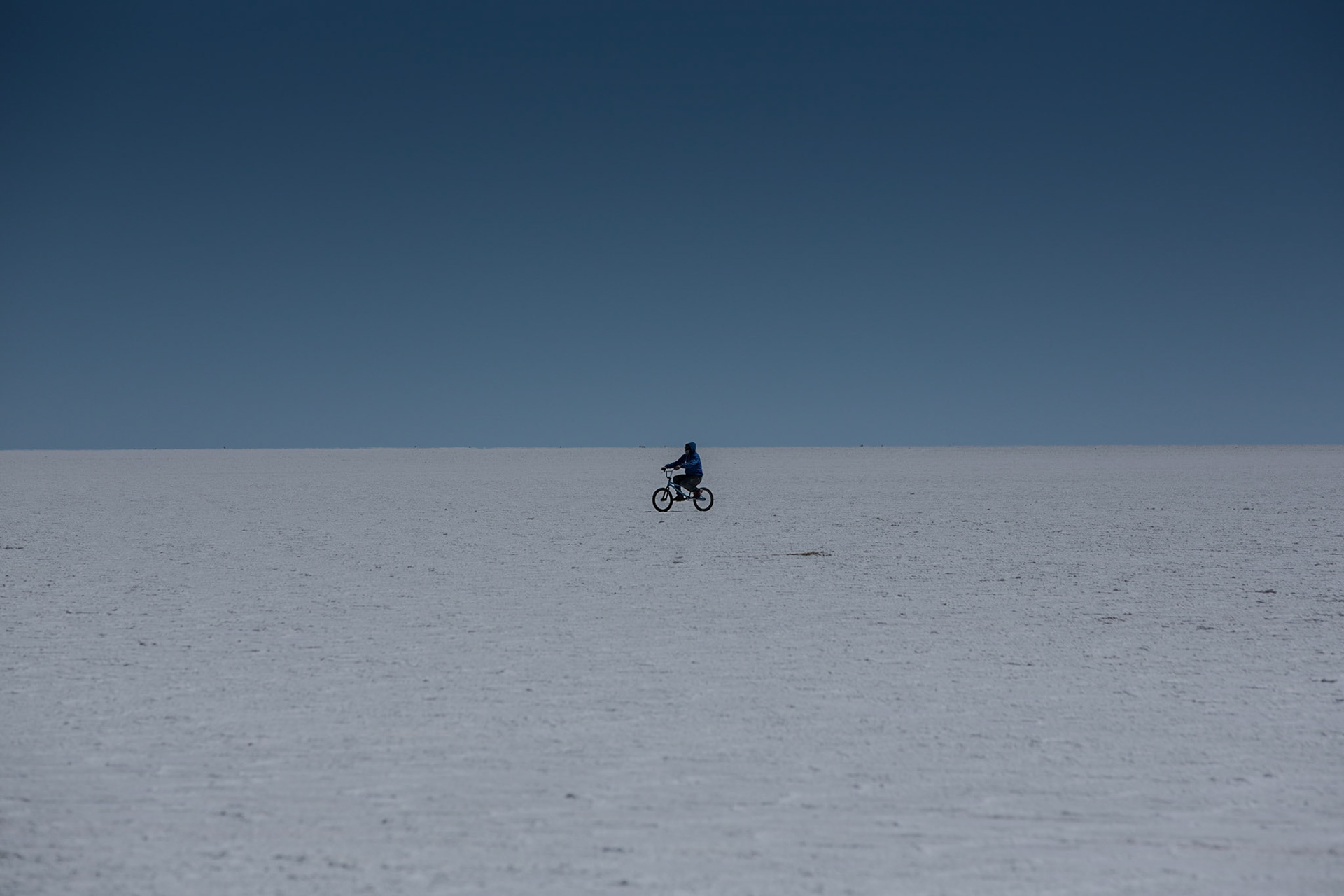
Laguna Verde is a high-altitude salt lake in southwest Bolivia, known for its green color. It sits at the foot of 2 volcanoes, Licancabur (with its perfect pyramid shape) and Juriques.

Hot springs at the foot of Cerro Polques, in the bolivian altiplano.

Laguna Colorada is a shallow salt lake in the southwest of the altiplano of Bolivia, within Eduardo Avaroa Andean Fauna National Reserve and close to the border with Chile. The lake contains borax islands, whose white color contrasts with the reddish color of its waters, which is caused by red sediments and pigmentation of some algae. In this area, James's flamingos abound.

San Cristóbal Lípez, Bolivia. Since the Spanish colonization, there has always been a small town dedicated to mining in San Cristóbal. The original colonial town was moved to a new location to allow large-scale exploitation of the San Cristóbal mine. The new town was equipped with basic services and the old church -considered one of the oldest in the Bolivian plateau- was moved to its new location stone by stone.

On the outskirts of Uyuni, Bolivia, lies a cemetery for trains, for locomotives. Uyuni has long been an important transportation hub in South America and it connects several major cities. In the early 19th century, big plans were made to build an even bigger network of trains out of Uyuni, but the project was abandoned because of a combination of technical difficulties and tension with neighboring countries. The trains and other equipment were left to rust and fade out of memory. In other places, the mighty steel trains would have held up better. The salt winds that blow over Uyuni, which hosts the world’s largest salt plain, have corroded all of the metal.

On the outskirts of Uyuni, Bolivia, lies a cemetery for trains, for locomotives. Uyuni has long been an important transportation hub in South America and it connects several major cities. In the early 19th century, big plans were made to build an even bigger network of trains out of Uyuni, but the project was abandoned because of a combination of technical difficulties and tension with neighboring countries. The trains and other equipment were left to rust and fade out of memory. In other places, the mighty steel trains would have held up better. The salt winds that blow over Uyuni, which hosts the world’s largest salt plain, have corroded all of the metal.

On the outskirts of Uyuni, Bolivia, lies a cemetery for trains, for locomotives. Uyuni has long been an important transportation hub in South America and it connects several major cities. In the early 19th century, big plans were made to build an even bigger network of trains out of Uyuni, but the project was abandoned because of a combination of technical difficulties and tension with neighboring countries. The trains and other equipment were left to rust and fade out of memory. In other places, the mighty steel trains would have held up better. The salt winds that blow over Uyuni, which hosts the world’s largest salt plain, have corroded all of the metal.

Salar de Uyuni, Bolivia. We spent the night close to the salar to get there very early in the morning to be able to walk and take pictures before sunrise. The landscape and the light were even more incredible that I had imagined.

Salar de Uyuni, Bolivia. We spent the night close to the salar in order arrive very early the next morning and be able to take pictures before sunrise. The landscape and the light were even more incredible that I had imagined. For 30 min, I took dozens of shots. There was a moment when -as hard as it may sound for a photographer- I stopped shooting and I just stood there to be and breathe.

Salar de Uyuni, Bolivia. We spent the night close to the salar to get there very early in the morning to be able to walk and take pictures before sunrise. The landscape and the light were even more incredible that I had imagined. When the sun rose, we remained silent while having the impression on walking on a white sea

Salar de Uyuni, Bolivia. We spent the night close to the salar in order arrive very early the next morning and be able to take pictures before sunrise. The landscape and the light were even more incredible that I had imagined. For 30 min, I took dozens of shots. There was a moment when -as hard as it may sound for a photographer- I stopped shooting and I just stood there to be and breathe.

We spent the night close to Salar de Uyuni in Bolivia to arrive very early the next morning and be able to take pictures before sunrise. The landscape and the light were even more incredible than we had imagined. There was a moment when -as hard as it may sound for a photographer, I stopped taking pictures and we just stood there to be and breathe.

Isla Incahuasi is a hilly and rocky outcrop of land and former island in Bolivia situated in the middle of Salar de Uyuni, the world's largest salt flat, at an elevation of 3,656 meters. Incahuasi hosts gigantic cacti and there are unusual and fragile coral-like structures and deposits that often consist of fossils and algae. The place is the top of the remains of an ancient volcano, which was submerged when the area was part of a giant prehistoric lake, roughly 40,000 years ago.

Isla Incahuasi is a hilly and rocky outcrop of land and former island in Bolivia situated in the middle of Salar de Uyuni, the world's largest salt flat, at an elevation of 3,656 meters. Incahuasi hosts gigantic cacti and there are unusual and fragile coral-like structures and deposits that often consist of fossils and algae. The place is the top of the remains of an ancient volcano, which was submerged when the area was part of a giant prehistoric lake, roughly 40,000 years ago.

Salar de Uyuni is the world's largest salt flat at 10,582 square kilometers. It is located in Potosí in southwest Bolivia, near the crest of the Andes and is at an altitude of 3,656 meters above sea level.The Salar was formed as a result of transformations between several prehistoric lakes. It is covered by a few meters of salt crust, which has an extraordinary flatness. The crust serves as a source of salt and covers a pool of brine, which is exceptionally rich in lithium. The place has an end-of-the-world feel to it and invites to explore using any means of transportation.
